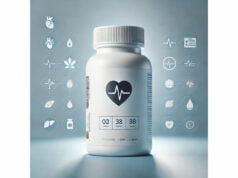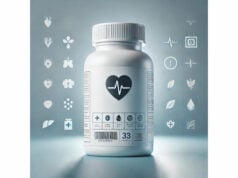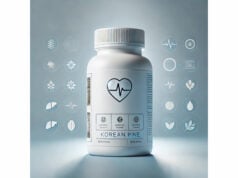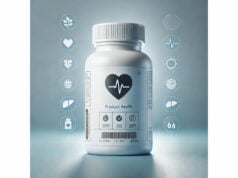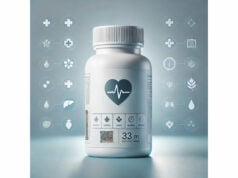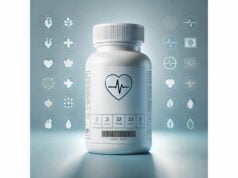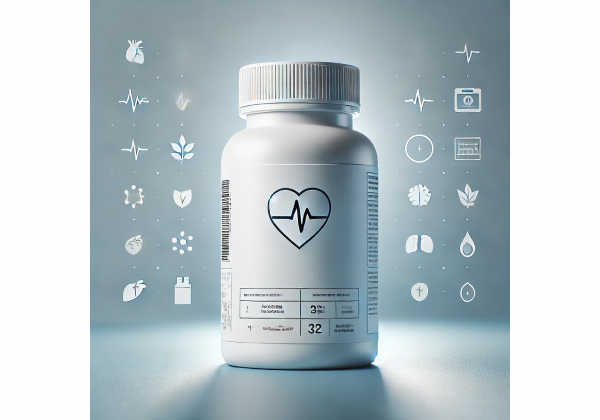
Kumuda is the classical Ayurvedic name for the water lily—most commonly referring to species in the Nymphaea genus. In traditional texts, Kumuda is described as a cooling, soothing flower used for heat-related conditions, skin comfort, and digestive balance. Modern research adds a contemporary layer: extracts from Nymphaea species show antioxidant and anti-inflammatory activity in lab and animal models, with early signals for metabolic support. People today encounter Kumuda as dried petals for tea, standardized capsules, liquid extracts, and topical preparations. Yet products can vary widely because different water lilies (and even unrelated “lotus” species) are marketed under similar names. This guide clarifies what Kumuda is, what the evidence actually suggests, practical ways to use it, realistic dosage ranges, safety considerations, and how to buy quality products without getting misled. You will leave with a clear, balanced view that respects tradition while staying grounded in current data.
Quick Overview
- May help calm inflammation and oxidative stress based on preclinical studies.
- Possible support for glucose handling is preliminary and not yet proven in humans.
- Typical tea uses 2–3 g dried petals in 250–300 mL hot water; standardized extracts often 250–500 mg per day per label.
- Avoid during pregnancy and breastfeeding; also avoid if you have psychiatric conditions or take sedatives.
- Choose verified Nymphaea species; some “blue lotus” items are misidentified or adulterated.
Table of Contents
- What is Kumuda and does it work?
- Benefits: what research actually shows
- Forms, preparations, and dosage
- How to take it safely and who should avoid
- Side effects, interactions, and troubleshooting
- Quality, legality, and buying guide
What is Kumuda and does it work?
Kumuda is a Sanskrit term commonly applied to water lilies (genus Nymphaea). In Ayurvedic lines of practice, Kumuda is traditionally classified as cooling and pitta-pacifying, often paired with other “sheetala” botanicals for symptoms linked to heat, irritability, or burning sensations. It appears in classic formulations and as a standalone flower infusion.
A practical challenge today is naming. Products labeled “lotus,” “blue lotus,” or “water lily” may refer to different plants. Nelumbo nucifera is the sacred lotus (a different family), while Nymphaea species are true water lilies. Within Nymphaea, several species are circulated—Nymphaea nouchali (including the blue-flowered variety), Nymphaea lotus (often white or pale yellow), and others. Despite overlapping traditional uses, their chemistry can differ, and modern commercial products may blend species or mislabel them. That’s why species transparency on labels matters.
What about efficacy? Contemporary research on Nymphaea is promising but still early. Lab studies (in vitro) and animal models repeatedly show antioxidant and anti-inflammatory activity; some reports describe vasorelaxant effects on blood vessels and preliminary metabolic effects (for example, modulation of glucose transport in cell models). These signals help explain traditional cooling and calming uses, and they justify continued research. However, high-quality human trials are minimal. At this point, Kumuda should be regarded as a traditionally valued herb with modern preclinical support, not a proven therapy for specific diseases.
For most people exploring Kumuda as a calming tea or as a mild adjunct to wellness routines, the existing evidence supports cautious, short-term personal trials—provided safety rules and medication interactions are respected. For those seeking targeted effects (e.g., blood sugar management, pain, or sleep), the science is not yet definitive, and medical care should remain the mainstay.
In short: Kumuda is water lily, traditionally cooling and soothing. Modern studies find antioxidant, anti-inflammatory, and vascular effects in preclinical settings. Human data are limited, so use it for gentle support rather than as a replacement for treatment.
Benefits: what research actually shows
When evaluating herbal benefits, the hierarchy of evidence matters. For Kumuda (Nymphaea species), the most consistent findings come from laboratory and animal work. Here are the areas with the strongest current signals, along with what they mean in practical terms.
1) Antioxidant and free-radical scavenging
Extracts from Nymphaea leaves, flowers, and stamens demonstrate robust scavenging of free radicals in test systems, along with favorable phenolic and flavonoid profiles. In animal studies, these extracts reduce lipid peroxidation and related markers of oxidative stress. Translation to humans is not automatic, but these data align with the traditional view that Kumuda “cools” and soothes tissues under stress.
2) Anti-inflammatory activity
Rodent models show that Nymphaea extracts blunt inflammatory responses—reducing paw edema, wheal diameter after histamine challenge, and other indices. Mechanistically, effects may involve modulation of inflammatory mediators and pathways linked to oxidative stress. Practically, this suggests a rationale for calm-the-heat uses in skin comfort, seasonal irritations, or post-exercise soreness. It does not prove clinical benefit for arthritis or chronic inflammatory diseases, which require controlled human trials.
3) Metabolic and glucose-handling signals (preclinical)
Cell studies using Nymphaea nouchali seed extracts reveal increased glucose uptake in adipocytes, with activation of PPAR-γ and up-regulation of GLUT-4. Some animal work suggests antihyperglycemic effects. These findings are intriguing for metabolic health but remain preclinical. If you are managing diabetes or insulin resistance, do not substitute Kumuda for prescribed care; at most, consider it as a complementary tea while monitoring glucose closely and discussing changes with your clinician.
4) Vascular tone and circulation (emerging)
Recent investigations on water lily extracts indicate vasorelaxant and mild hypotensive effects in experimental models. These early signals could, in time, connect traditional “cooling” descriptions with endothelial or smooth-muscle relaxation. Human studies are needed to confirm magnitude, dosing, and safety—especially for people on blood-pressure medications.
5) Antimicrobial and skin-relevant actions (lab evidence)
In vitro assays show inhibitory effects of water lily extracts against selected microbes. While in vitro antimicrobial findings often fail to generalize to living skin or systemic infection, they support the traditional use of water lily–containing oils and pastes as supportive skincare (for example, for heat-triggered flushing or after-sun comfort). For any persistent rash or suspected infection, medical evaluation is still essential.
What this means for you
If your interest is general calm, occasional sleep support, or soothing overheated skin, a well-sourced Kumuda product is reasonable to try. If your goals include blood sugar, blood pressure, or chronic pain, the current state of evidence does not yet justify relying on Kumuda alone. Use it—if at all—as a gentle adjunct, track your response, and keep your healthcare team in the loop.
Forms, preparations, and dosage
There is no single standardized dose for Kumuda because species, plant parts, and extraction methods vary. Sensible, conservative ranges are guided by traditional practice and typical commercial products. Always start low, assess tolerance, and follow your product’s label.
Common forms
- Dried petals or whole flowers (for tea): Pleasantly aromatic, used for calming and “cooling” infusions.
- Standardized capsules or tablets: Often specify species (e.g., Nymphaea lotus or Nymphaea nouchali) and extract ratio (e.g., 10:1).
- Liquid extracts/tinctures: Hydroalcoholic extracts (e.g., 1:5 or 1:3) for flexible dosing.
- Topical oils or creams: Combine water lily extracts with emollients for skin comfort.
- Aromatics: Some cosmetics and bath products use water lily fragrance or flower extracts for sensory relaxation.
Reasonable starting ranges
These are pragmatic, people-first ranges for otherwise healthy adults. If unsure, consult your clinician, especially if you take medications.
- Tea infusion: 2–3 grams of dried petals (about 1–2 heaping teaspoons) steeped in 250–300 mL hot water for 5–10 minutes; up to once or twice daily as needed.
- Standardized extract (capsules): Common labels suggest 250–500 mg daily of a concentrated extract; many users take 250 mg once daily for a week before considering an increase.
- Liquid extract: 1–2 mL of a 1:5 hydroalcoholic extract once daily; adjust per label and response.
- Topical: Apply a thin layer of water lily–containing cream or oil to small test areas once daily for 2–3 days before regular use.
Timing and stacking
- For evening calm or post-work decompression, take your tea or capsule 30–60 minutes before your intended wind-down.
- For skin comfort after sun or heat, apply a topical product within 30 minutes of exposure, ideally after a cool shower.
- If combining with other calming botanicals (e.g., chamomile or lemon balm), reduce individual doses and test combinations on low-stress days first.
Adjusting for sensitivity
- If you’re sensitive to sedatives, halve the first dose (e.g., 1–1.5 g tea or 125 mg extract).
- Avoid alcohol-based tinctures if you’re alcohol-sensitive; choose glycerites or teas instead.
Duration
- For situational use (wind-down, occasional stress), as needed.
- For an exploratory wellness routine, try a 2–4 week block, then reassess. Take breaks if using daily.
Important notes
- Product potency varies; check species, part used, and extract ratio on the label.
- Some “lotus” products are actually blends or misidentified plants; buy from sellers who specify Latin binomials and provide third-party testing.
How to take it safely and who should avoid
Kumuda is not risk-free. Water lily products can cause sedation, especially at higher doses, and some modern “blue lotus” items have raised safety concerns. Sensible precautions make a meaningful difference.
Who should avoid
- Pregnant or breastfeeding individuals: Safety data are insufficient; avoid.
- People with psychiatric or seizure histories: Some products marketed as “blue lotus” have been linked to altered mental status or, rarely, seizures in case reports; avoid unless your specialist specifically agrees.
- Those on sedatives or sleep medications (benzodiazepines, Z-drugs, strong antihistamines, opioids): Potential additive sedation; avoid or use only with clinician oversight.
- Those on antipsychotics or dopaminergic agents: Water lily alkaloids (e.g., nuciferine in certain species) may conceptually interact with dopaminergic pathways; discuss with your prescriber.
- Significant liver or kidney disease: Use only with medical guidance; start low, monitor labs if advised.
Use-with-caution scenarios
- Blood pressure medications: Early preclinical signals suggest vasorelaxant activity; monitor blood pressure if you experiment.
- Diabetes medications: Preclinical data on glucose handling suggest a theoretical interaction; track glucose carefully if you try tea or low-dose extract.
- Before driving or operating machinery: Do not use Kumuda the first time (or at higher doses) before tasks that require alertness.
Allergies and skin testing
- Perform a patch test for topicals: apply to a 2–3 cm area on the inner forearm daily for 2–3 days and watch for redness, itch, or swelling.
Dose discipline and sobriety
- Stay within conservative ranges; more is not better.
- Do not combine Kumuda with alcohol or recreational substances; adverse effects are more likely.
Product quality
- Choose products that list the Latin name (e.g., Nymphaea lotus, Nymphaea nouchali), plant part, extract ratio, and provide certificates of analysis (CoAs) for identity, purity (microbes, heavy metals), and adulterants.
If any unexpected symptoms occur—marked drowsiness, confusion, palpitations, agitation—stop use and seek medical care. For ongoing conditions, keep your healthcare team informed about any herbal you take.
Side effects, interactions, and troubleshooting
Common, usually mild
- Drowsiness or a “heavy” relaxed feeling (more likely with concentrated extracts or multiple cups of tea).
- Dry mouth or mild dizziness in sensitive users.
- Stomach upset if taken on an empty stomach, especially with alcohol-based tinctures.
Less common, more concerning
- Confusion, disorientation, or perceptual changes—reported in association with some “blue lotus” products, particularly when vaped or ingested in strong infusions.
- Headache or palpitations after higher doses.
- Skin irritation from topical products (usually fragrance components or carrier oils).
Likely interaction risks
- Sedatives and sleep medications: additive CNS depression.
- Antihypertensives: theoretical additive hypotension if vascular relaxation is significant for you.
- Antipsychotics/dopamine-active drugs: theoretical pharmacodynamic interplay with aporphine-type alkaloids present in some species.
- Alcohol: avoid co-use; increases sedation and nausea risk.
Troubleshooting guide
- Too drowsy: Cut dose by 50–75% or switch to tea only. Use earlier in the evening. Avoid combining with other calmatives.
- Stomach discomfort: Take with a small snack or switch to tea/topical.
- No noticeable effect: Confirm species and extract ratio; many users perceive effects only with verified Nymphaea extracts taken consistently for 1–2 weeks. If still no effect, it may not be a good fit—do not continue escalating dose.
- Skin reaction: Stop topical use; try a different base (fragrance-free) or a patch-tested product with fewer botanicals.
When to stop immediately and seek care
- Severe confusion, agitation, hallucinations, chest pain, fainting, or sustained rapid heart rate.
- Any neurological symptoms (e.g., new seizures, severe headache) or allergic responses (facial swelling, wheeze, hives).
Remember: absence of regulation for many herbal products means batch-to-batch variability. Your safest bet is a transparent brand with third-party testing and modest, conservative dosing.
Quality, legality, and buying guide
Identity first
Look for the Latin binomial (e.g., Nymphaea lotus or Nymphaea nouchali), the plant part (flower, leaf, stamen), the extract ratio (e.g., 10:1; 1:5), and a batch number. Avoid products that say only “lotus extract” without species.
Certificates of analysis (CoAs)
Reputable brands provide CoAs showing:
- Identity testing (e.g., HPTLC, HPLC, or DNA-based methods) matched to the correct species.
- Purity: microbial counts within limits; heavy metals below regulatory thresholds.
- Absence of adulterants (e.g., synthetic cannabinoids occasionally reported in seized products marketed as “blue lotus”).
Form matters
- Teas made from verified, single-species dried petals are easier to assess and dose conservatively.
- Capsules should specify extraction solvent and ratio; standardized markers (e.g., total flavonoids) are helpful.
- Vaping or smoking herbal extracts increases risk and is not recommended.
Legal notes
Regulatory status varies by country and use. In some settings, “blue lotus” products have drawn attention due to psychoactive reports and misuse (particularly extracts intended for inhalation). Wherever you live, check local regulations. Regardless of legality, safety standards are the same: verified species, clean manufacturing, and conservative dosing.
Red flags
- Grandiose claims (“cures anxiety,” “reverses diabetes”).
- No species listed, or vague blends of “lotus/water lily.”
- No third-party testing, or documents that do not match the product lot.
- Highly concentrated extracts intended for inhalation or “euphoria.”
Smart buying checklist
- Verify species and part.
- Check CoA for identity, purity, and heavy metals.
- Choose oral tea or capsule over inhaled routes.
- Start low, track how you feel, and avoid stacking with other sedatives.
- Reassess after 2–4 weeks; discontinue if no clear benefit.
With these steps, you minimize risks tied to mislabeling and adulteration while giving Kumuda a fair, careful trial.
References
- Ethanolic extract of Nymphaea lotus L. (Nymphaeaceae) leaves exhibits in vitro antioxidant, in vivo anti-inflammatory and cytotoxic activities on Jurkat and MCF-7 cancer cell lines 2021 (Preclinical Study)
- Nymphaea nouchali Burm. f. hydroalcoholic seed extract increases glucose consumption in 3T3-L1 adipocytes through activation of peroxisome proliferator-activated receptor gamma and insulin sensitization 2015 (Mechanistic Study)
- Chemical Composition, Market Survey, and Safety Assessment of Blue Lotus (Nymphaea caerulea Savigny) Extracts 2023 (Safety Assessment)
- Toxicity From Blue Lotus (Nymphaea caerulea) After Ingestion or Inhalation: A Case Series 2023 (Case Series)
- Differential Flavonoid and Other Phenolic Accumulations Among Four Nymphaea Species 2022 (Phytochemistry)
Disclaimer
The information in this article is educational and is not a substitute for personalized medical advice, diagnosis, or treatment. Do not ignore or delay professional guidance because of something you read here. Always consult a qualified healthcare professional before starting, stopping, or combining any supplement—especially if you are pregnant or breastfeeding, have a medical condition, or take prescription medications. If you experience concerning symptoms after using any product, stop immediately and seek medical care.
If you found this guide helpful, consider sharing it with a friend or posting it on Facebook or X (formerly Twitter). Your support helps us continue creating clear, useful health content. Thank you.

